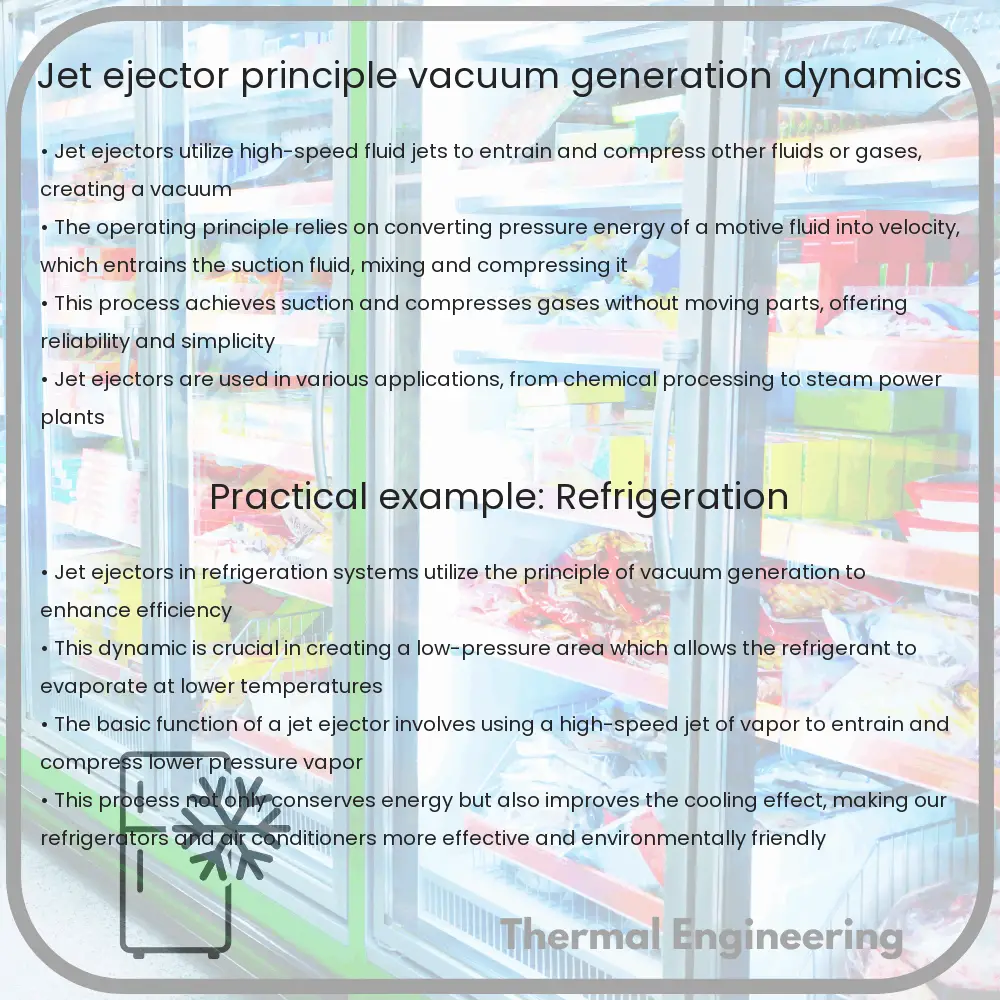Learn how jet ejectors use fluid dynamics to pump and compress fluids in challenging industrial environments.

Understanding Jet Ejectors:
A jet ejector is an engineering device that employs a fluid stream to pump or compress other fluids. Commonly used in applications where traditional pumps struggle, such as in cases involving corrosive materials, high temperatures, or a need for sterile environments, jet ejectors are integral to various industrial processes, including the chemical, petrochemical, and power industries.
Principle of Operation:
The basic operating principle of a jet ejector revolves around the conversion of pressure energy to kinetic energy. It utilizes a primary fluid (also called motive fluid), which is typically steam, air, water, or any gas that can be compressed and expelled at high velocity. This high-speed jet of motive fluid passes through a converging-diverging nozzle which significantly increases the fluid’s velocity while decreasing its pressure.
- Converging Section: The fluid’s pressure begins to decrease as it accelerates in the converging part of the nozzle.
- Throat: The fluid reaches its maximum speed and its minimum pressure at the nozzle’s throat.
- Diverging Section: The high-velocity jet enters the diverging section where it starts to decelerate and mix with the secondary fluid (also called the suction fluid).
As the high-velocity motive fluid exits the nozzle, it entrains and increases the velocity of the secondary fluid. Both fluids then mix in the mixing chamber and continue through a diffuser where the kinetic energy is converted back into pressure energy sufficient to transport the mixed fluid against a pressure gradient.
Vacuum Generation Dynamics:
The capacity of jet ejectors to generate a vacuum arises from the ability of the high-velocity motive fluid to entrain air or other gases as it mixes with the secondary fluid. The process of air removal from the chamber reduces the pressure, creating a vacuum.
- Initiation: As the motive fluid exits the nozzle, it forms a low-pressure area in the ejector.
- Entrainment: This low pressure draws in the secondary fluid (air or gases needing to be evacuated from a chamber).
- Mixing and Compression: The motive and secondary fluids mix in the ejector and then compress in the diffuser, thus increasing the pressure toward the outlet which maintains the suction effect.
The efficiency of a jet ejector depends on the design of the nozzle, the pressure and velocity of the motive fluid, and the properties of the fluids involved. Particularly, achieving an effective and efficient mixing in the ejector is critical for good performance.
Applications and Advantages
Jet ejectors are favored in many industrial fields due to their simplicity, reliability, lack of moving parts, and ability to handle high temperatures and corrosive materials. They are commonly used for creating vacuums in process industries, priming large pumps, and in systems where maintaining sterility is important.
- Simplicity: No moving parts, which minimizes maintenance requirements.
- Versatility: Can handle a wide range of motive fluids and operating environments.
- Safety: No risk of electrical or mechanical failure makes them ideal for hazardous environments.
In conclusion, jet ejectors are a crucial technology in various engineering disciplines, primarily due to their ability to efficiently handle difficult fluids and environments while maintaining high reliability and safety standards.